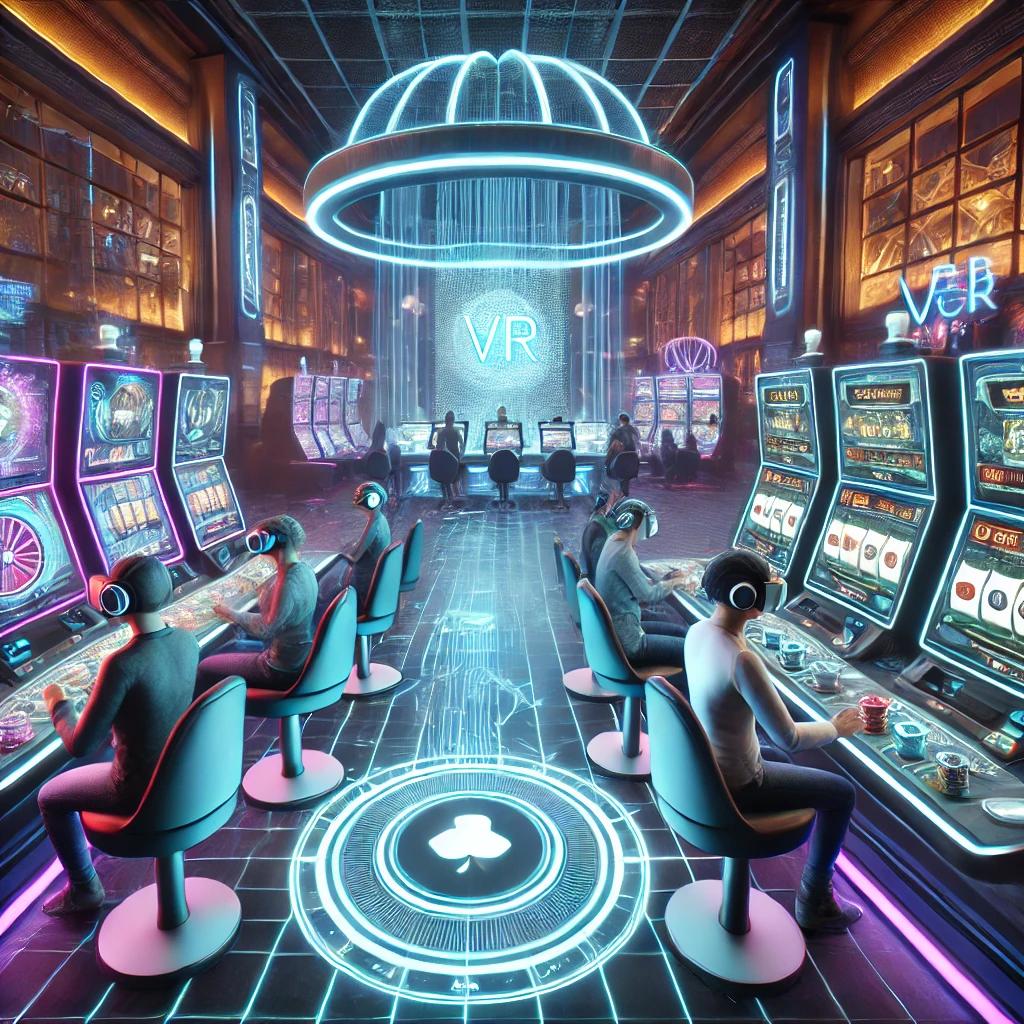
The Rise of Virtual Reality in Gambling
Virtual Reality (VR) has long been hailed as the “next big thing” in tech, with applications spanning gaming, healthcare, education, and beyond. The gambling industry, known for embracing innovation, isn’t far behind. VR casinos promise an immersive experience that merges the excitement of physical casinos with the convenience of online platforms.
In theory, it’s an irresistible proposition: players donning a headset, stepping into a virtual casino, interacting with other gamblers, and experiencing the thrill of a live table—all without leaving their living rooms. But in reality, is VR in gambling a sustainable trend, or will it fizzle out before it truly takes off?
What Makes VR Casinos Unique?
At their core, VR casinos replicate the ambiance and interaction of a physical casino floor. Players can stroll through virtual lobbies, sit at tables, place bets, and even engage in casual conversations with avatars of other gamblers. The sound of slot machines, the clinking of chips, and the immersive graphics blur the line between reality and simulation.
Unlike traditional online casinos, where interactions are limited to chat boxes or one-way dealer streams, VR casinos enable social immersion. This social element is a game-changer, addressing one of the primary complaints about online gambling: isolation.
Current State of VR Casinos: Progress or Hype?
Despite early excitement, VR casinos remain a niche segment within iGaming. Platforms like SlotsMillion and JackpotVR laid the groundwork, offering virtual casino environments with modest game selections. However, the user base remains relatively small, and adoption has been slower than anticipated.
Why? The answers lie in a mix of technological limitations, high entry costs, and a lack of mass-market content. VR headsets are expensive, often running into hundreds of dollars, and require powerful hardware to run seamlessly. Moreover, not every gambler is tech-savvy enough to navigate these systems.
The Social Element: A Double-Edged Sword
Social interaction is VR casinos’ most appealing feature, but it’s also a potential pitfall. In physical casinos, social norms and security measures help prevent inappropriate behavior. In virtual spaces, these boundaries are harder to enforce. Harassment, toxic interactions, and even cheating could become significant issues if not properly addressed by platform operators.
However, for gamblers craving the camaraderie of a casino floor, VR offers something that traditional online platforms can’t: a sense of connection.
Barriers to Widespread Adoption
1. Cost of Entry
VR headsets, while becoming more affordable, are still seen as luxury tech. For casual gamblers, the steep price tag remains a major hurdle.
2. Technical Limitations
Issues like motion sickness, lag, and headset discomfort persist. Long gaming sessions are impractical for many players, reducing engagement.
3. Regulatory Uncertainty
Different jurisdictions have varying stances on VR gambling, and the lack of clear frameworks could stall adoption in key markets.
Is There a Market for VR Casinos?
Statistically speaking, the global VR market is growing. According to Statista, it’s projected to grow from $12 billion in 2022 to over $22 billion by 2025. However, much of this growth hinges on consumer adoption of VR headsets, which has been slower than expected.
For VR casinos to succeed, operators will need to:
• Invest in top-tier content development.
• Simplify onboarding processes for new players.
• Address technical limitations and reduce hardware costs.
The Path Forward: Integration, Not Replacement
Instead of viewing VR casinos as a replacement for traditional platforms, industry leaders might benefit from treating them as a complementary experience. Hybrid platforms, where players can switch between standard and VR modes seamlessly, might bridge the gap and attract a wider audience.
Additionally, loyalty programs, exclusive VR events, and partnerships with tech companies could drive adoption by creating added value for players.
Final Thoughts: 2025—The Year of VR Casinos?
So, is 2025 the year VR casinos finally break into the mainstream? Probably not. But it could be the year the industry starts laying a more solid foundation for long-term adoption.
The technology has immense potential, but without addressing affordability, technical barriers, and regulatory clarity, it risks becoming a flashy niche rather than a transformative trend.
For now, VR casinos remain an exciting frontier, with 2025 set to determine whether they will grow into a lasting force or fade into tech history as another unrealized vision.








